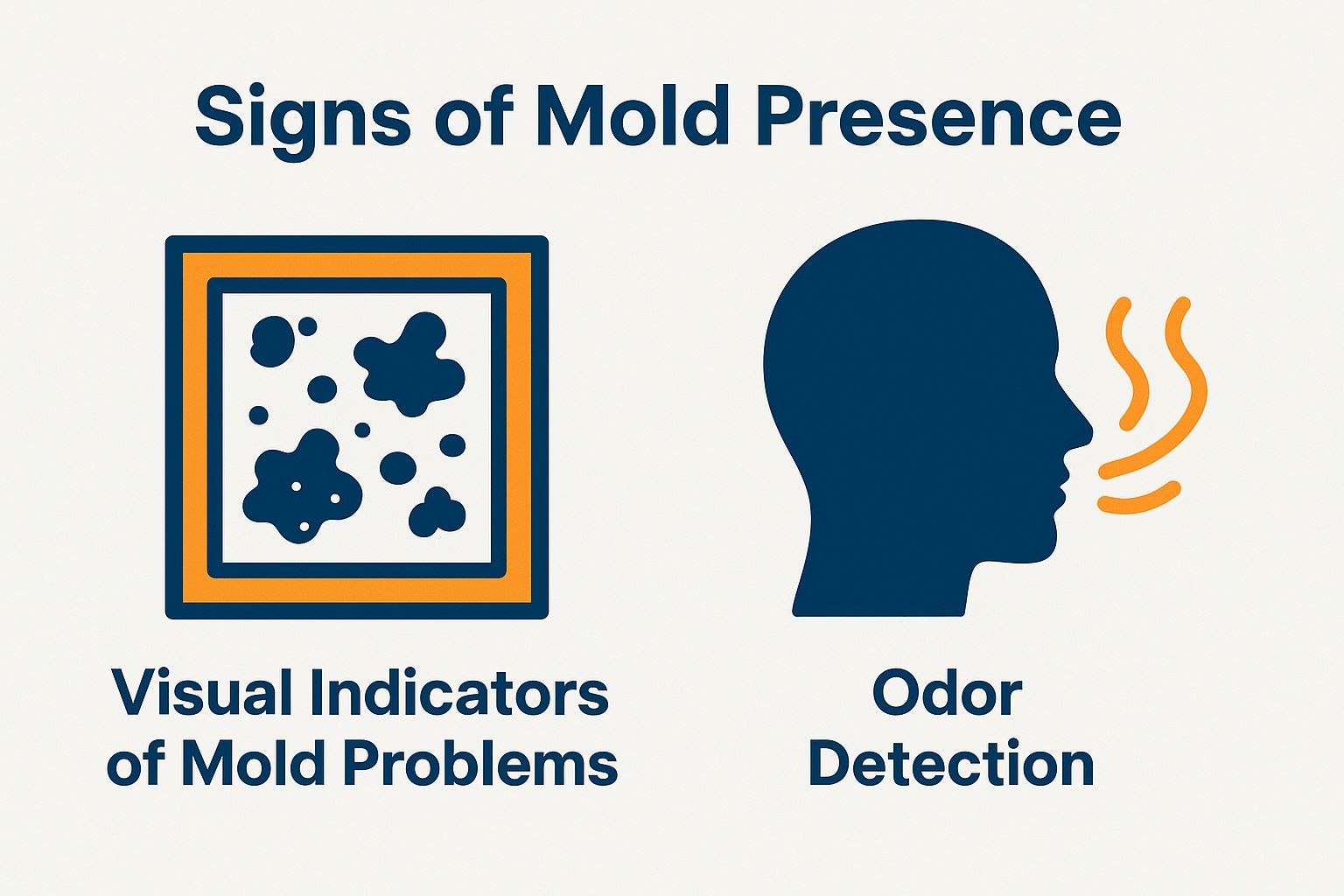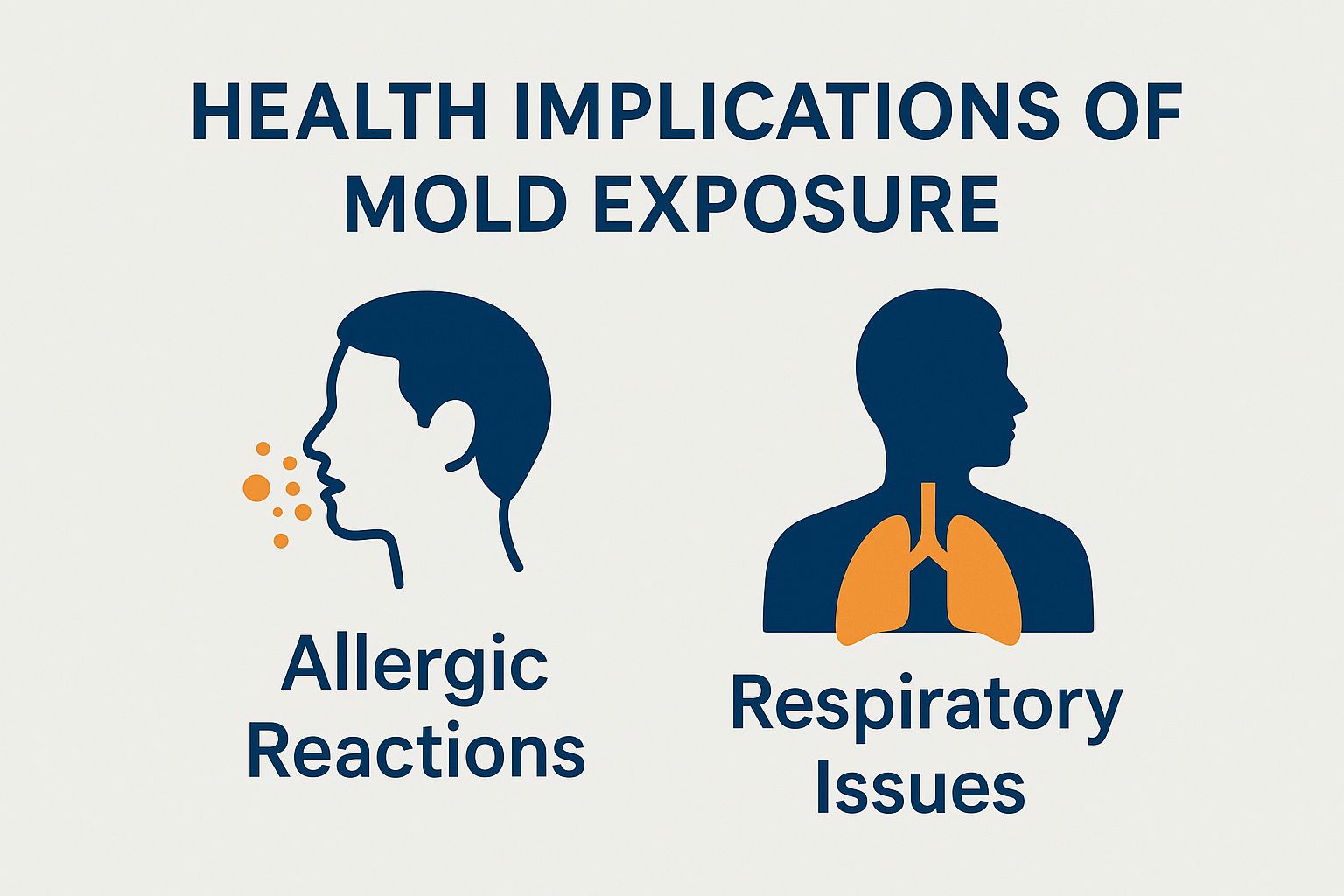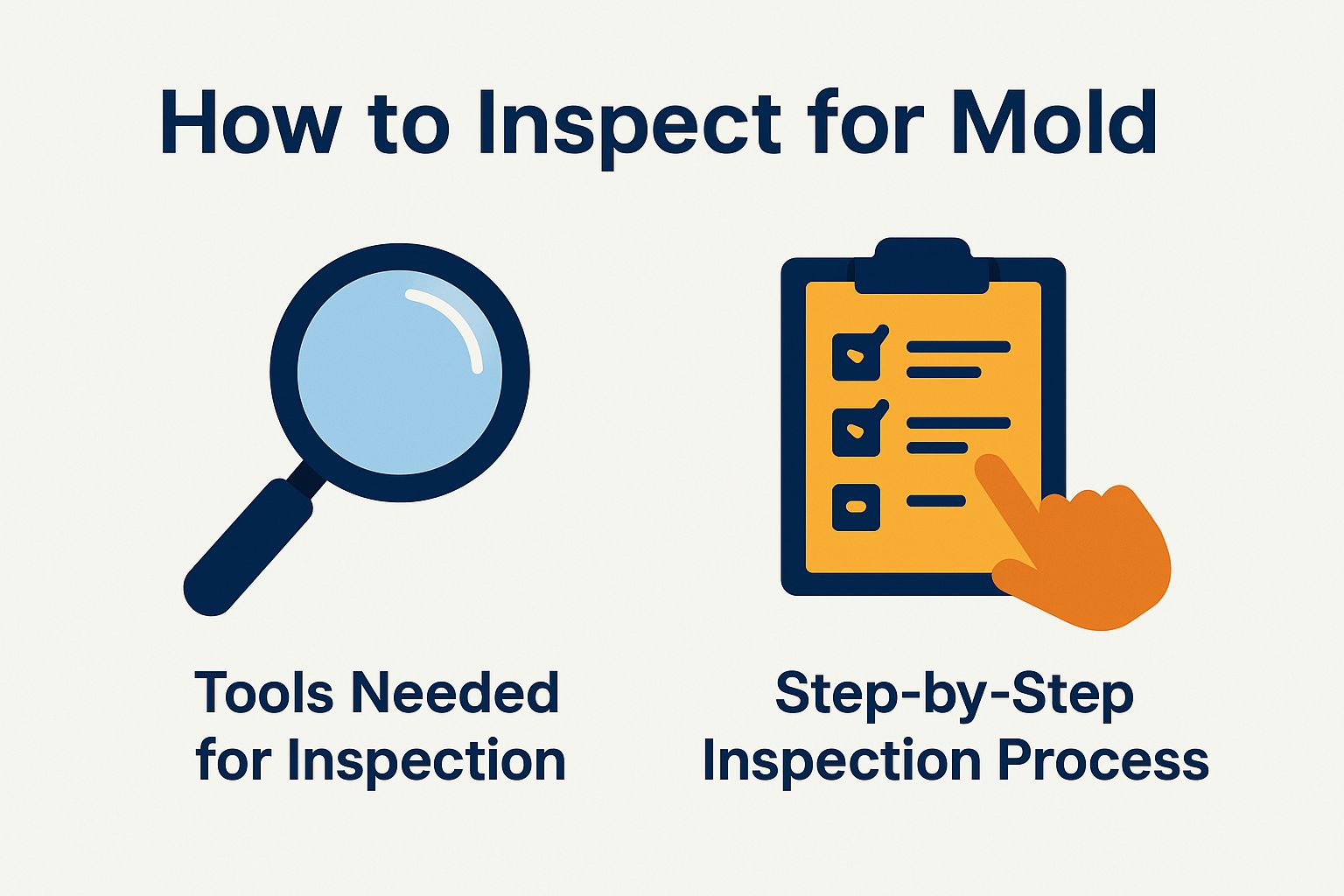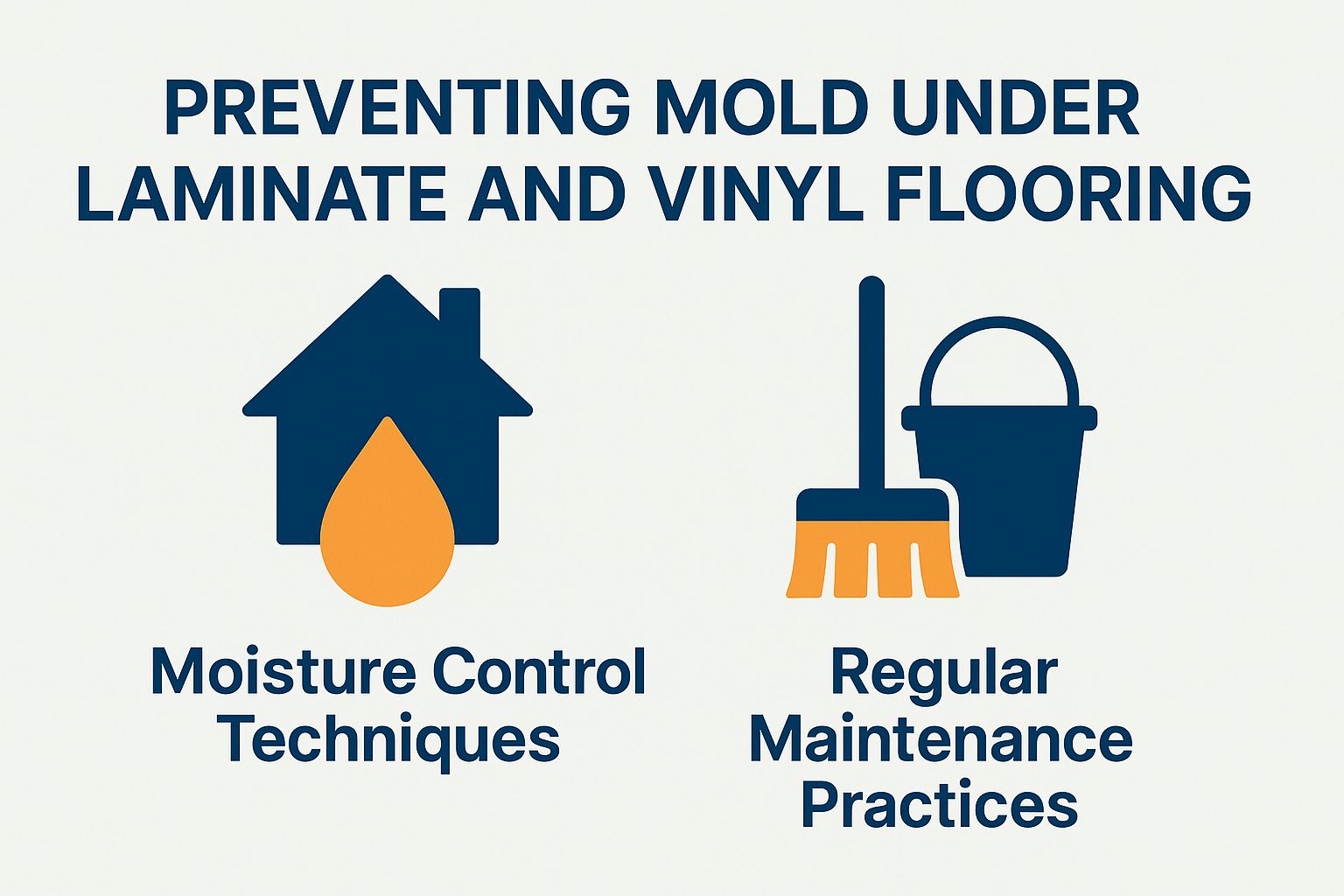
A musty smell or water damage can indicate mold under your laminate flooring.
Homeowners must understand the signs of mold growth, especially in humid areas. This article helps you identify mold indicators and common causes like water leaks. It also offers effective prevention strategies to keep your flooring safe.
Understanding Mold Growth
Mold grows in damp conditions with moisture levels over 60%. It thrives on organic materials like laminate flooring. Mold growth also needs specific temperatures, typically between 60 degreesF and 80 degreesF.
A notable example is Stachybotrys chartarum, which is commonly found in water-damaged environments, such as basements and bathrooms. This type of mold thrives on cellulose-rich materials, including wood and drywall.
Keep indoor humidity below 50% using dehumidifiers and proper ventilation to prevent mold growth. Regular inspections of areas susceptible to leaks and water damage are crucial, along with the use of mold-resistant products during renovations, to mitigate the risk of mold proliferation.
Common Causes of Mold
Mold under laminate flooring often comes from plumbing leaks, high humidity, and poor moisture barriers.
These issues pose serious health risks.
Effectively addressing these issues necessitates vigilance. For example, it is imperative to repair any plumbing leaks promptly to prevent water accumulation, as even a small drip can contribute to substantial mold growth over time.
Maintaining indoor humidity levels between 30% and 50% is essential. Utilizing a hygrometer to monitor humidity allows for appropriate adjustments to ventilation and dehumidification systems as required.
Additionally, it is crucial to inspect and enhance moisture barriers, particularly in basements. Installing a high-quality vapor barrier can significantly minimize moisture infiltration, thereby reducing the likelihood of mold development.
How to Identify Mold Presence
Early detection of mold presence is essential in preventing significant structural damage and potential health complications.
Visible signs include moldy patches and musty odors.

Visual Indicators of Mold Problems
Visual indicators include moldy patches, discoloration of the laminate, and mildew growth along seams. Common types of mold found in laminate flooring include black mold (Stachybotrys), which typically presents as dark green or black patches, and Penicillium, which often exhibits a powdery blue or green appearance.
These molds thrive in damp environments and are frequently observed in areas with leaks or elevated humidity levels. To identify mold, it is advisable to check for unusual odors, particularly musty scents, and to inspect corners or beneath the flooring where moisture may accumulate.
If you find mold, use a vinegar solution to clean affected areas. For severe cases, consult a professional.
Odor Detection
Detecting Odors
A musty odor is often the first sign of mold, linked to volatile organic compounds released during mold growth.
To confirm the source of the odor, start by using a moisture meter to detect hidden moisture in flooring or walls.
Subsequently, it is important to inspect any visible mold growth in damp areas, including basements or underneath sinks. If the mold presence is significant, one should consider employing an air quality test kit to assess spore counts.
Promptly address moisture issues with dehumidifiers and proper ventilation to stop mold growth and eliminate musty odors.
Health Implications of Mold Exposure
Mold exposure can result in significant health issues. These issues include respiratory problems and allergic reactions, especially concerning for vulnerable populations like children and the elderly.

Allergic Reactions to Mold
Exposure to mold spores can cause allergic reactions like sneezing, skin rashes, and eye irritation.
The National Institute of Health (NIH) reports that about 21% of people in the U.S. are allergic to mold, making it one of the most common allergens found in residential settings.
Common mold species, including Aspergillus, Penicillium, Cladosporium, and Stachybotrys, tend to thrive in damp environments, such as bathrooms and basements. Use dehumidifiers to keep indoor humidity levels below 50% to prevent mold growth, as well as to regularly inspect areas susceptible to water damage.
Research shows that people with mold allergies face a higher risk of asthma attacks and COPD exacerbations.
Ensure adequate ventilation with exhaust fans to reduce mold and allergens.
Respiratory Issues
Breathing in mold spores can worsen respiratory problems, especially for people with asthma or chronic lung conditions. Exposure to mold has been linked to serious respiratory issues, including chronic bronchitis, which is characterized by persistent coughing and mucus production.
Research indicates that individuals with mold allergies are at an increased risk of experiencing asthma attacks or acute exacerbations of chronic obstructive pulmonary disease (COPD).
Using High-Efficiency Particulate Air (HEPA) filters helps lower indoor mold spores, while maintaining consistent moisture control within homes is essential for prevention.
Regular cleaning with mold-inhibiting solutions can further mitigate exposure, particularly in damp areas such as bathrooms and basements.
How to Inspect for Mold
A thorough mold inspection is key to finding and fixing mold issues. This requires special tools and a careful approach.

Tools Needed for Inspection
Important tools for a mold inspection include a moisture meter, a black light for detecting mold, and personal protective equipment (PPE).
For an effective mold inspection, it is advisable to invest in a high-quality moisture meter like the Protimeter Surveymaster, which retails for approximately $300. This device combines both pin and non-invasive readings to deliver accurate results.
Along with the moisture meter, use a UV flashlight to find hidden mold.
Moreover, proper PPE, including N95 respirators and disposable coveralls, which typically cost around $25, is essential to ensure personal safety during inspections. By employing these tools, individuals can conduct a thorough assessment of potential mold issues while prioritizing their health.
Step-by-Step Inspection Process
To conduct an effective mold inspection, please adhere to the following step-by-step guide:
- Identify high-risk areas, such as bathrooms and kitchens;
- Check for visible signs of mold;
- Utilize a moisture meter to assess moisture levels;
- Conduct air quality tests if necessary.
After identifying high-risk areas, spend about 1-2 hours carefully examining each identified high-risk area. Particular attention should be given to corners, behind appliances, and under sinks, as mold frequently conceals itself in these locations.
Use the moisture meter to check for readings above 17% in building materials, which may indicate mold risk. If any visible mold is discovered, it is essential to don protective gear, such as gloves and a mask, during the cleaning process.
Consider hiring professionals for air quality testing, especially if you notice musty smells, as these could suggest hidden mold in other areas.
Preventing Mold Under Laminate and Vinyl Flooring
Implementing effective prevention strategies is crucial for homeowners aiming to focus on controlling moisture and ensuring proper ventilation in your home.
This approach should prioritize moisture control and ensure proper ventilation throughout the home.

Moisture Control Techniques
Homeowners should invest in dehumidifiers, like the Frigidaire FFAD5033W1, which costs around $200. To effectively manage moisture levels, homeowners are advised to invest in dehumidifiers, such as the Frigidaire FFAD5033W1, priced at approximately $200. It is also essential to address any leaks and install moisture barriers.
Plus these measures, maintaining indoor humidity levels below 60% is vital. A straightforward and effective approach is to monitor humidity with a hygrometer, which typically costs around $15.
In instances of elevated humidity, if humidity rises, run the dehumidifier continuously. Furthermore, conducting regular inspections and promptly addressing any leaks in plumbing or around windows will help prevent moisture accumulation.
Use waterproofing solutions like Drylok to protect basement walls.
By employing these comprehensive strategies, using these strategies helps homeowners create a drier, healthier living environment and protects against structural damage.
Regular Maintenance Practices
Regular maintenance is key to preventing mold and ensuring safety. This includes professional inspections, proper ventilation, and prompt leak repairs.
To effectively mitigate mold risks, conduct HVAC inspections twice a year to reduce mold risks. Clean filters improve airflow and cut repair costs.
Additionally, the installation of exhaust fans in high-moisture areas, such as bathrooms and kitchens, is recommended to reduce humidity levels. Any leaks should be addressed within 24 hours; further, apply mold-resistant sealants for extra protection in vulnerable areas.
Maintaining indoor humidity levels below 50% is crucial, which can be achieved by utilizing dehumidifiers during damp seasons. Regular inspections of gutters and ensuring proper drainage to divert water away from the foundation also play a significant role in preserving a mold-free environment.
Frequently Asked Questions
Common Signs of Mold Under Laminate Flooring
The most common signs of mold under laminate flooring include musty odors, discoloration or staining on the surface of the flooring, visible growth or spots, and warping or buckling of the flooring, potentially indicating the presence of Penicillium, Cladosporium, Aspergillus, or Stachybotrys chartarum.
Does mold grow under laminate flooring?
Yes, mold grows under laminate flooring when moisture is present. Laminate flooring is not completely waterproof and if water seeps through the seams or gets trapped underneath, it can create a conducive environment for mold growth, potentially leading to health effects as outlined by the American Lung Association and the National Institute of Health (NIH).
How can I tell if there is mold under my laminate flooring?
Aside from the visible signs mentioned, you can also use a moisture meter to detect any high levels of moisture under the flooring. You can also hire a professional mold inspector to conduct a thorough inspection of your home.
What should I do if I suspect mold under my laminate flooring?
Take action immediately if you suspect mold under your laminate flooring. You can start by removing the laminate flooring to inspect the subfloor for any signs of mold. If mold is present, it is best to hire a professional mold remediation company to safely and effectively remove it.
Is mold under laminate flooring dangerous?
Yes, mold under laminate flooring can be dangerous as it can release harmful spores into the air that can cause respiratory issues and allergies.
Address the issue quickly to prevent health risks.
How can I prevent mold from growing under my laminate flooring?
Properly install and seal laminate flooring to stop water from seeping through. Also, regularly check for any signs of water damage or leaks and address them immediately to prevent moisture buildup. Proper ventilation and humidity control in your home can also help prevent mold growth.